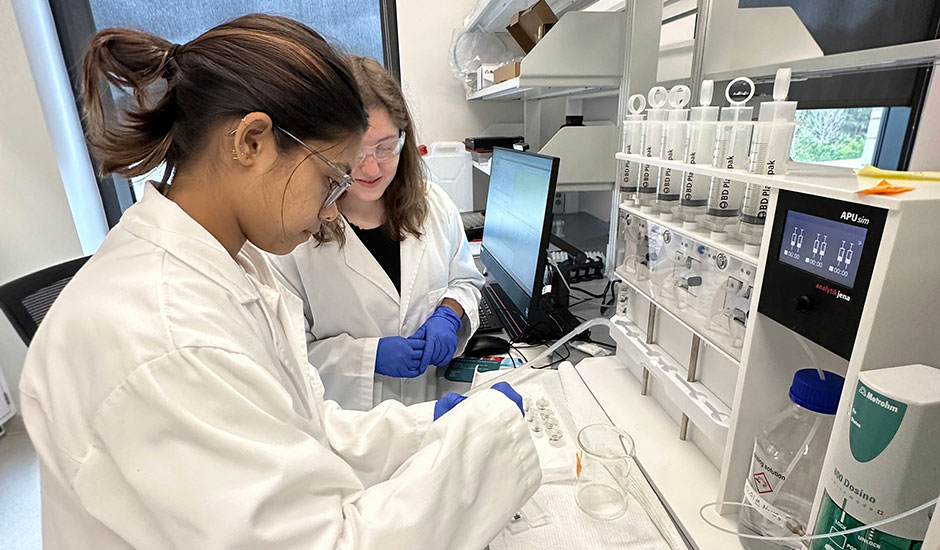Under the Safe Drinking Water Act, the U.S. Environmental Protection Agency (EPA) has established drinking water regulations for over 90 contaminants to safeguard public health. Six types of Per- and Polyfluoroalkyl Substances (PFAS), known as “forever chemicals” because they are difficult to break down, have recently been added to the list. Thousands of these manufactured chemicals, used in industry and consumer products, exist throughout our environment and exposure at certain levels poses health risks to humans and animals. Further research is critical to understanding PFAS, its impacts, and the treatment technologies needed to protect our drinking water.
The Water Tower (TWT), a global innovation hub for R&D, technology, and workforce development for the water sector, located in Gwinnett County, GA, is leading applied research and innovation on PFAS. TWT is testing samples for absorbable organic fluorine (AOF) by EPA’s Method 1621 using Metrohm USA’s Profiler F which is a combustion ion chromatograph. The AOF measurement is used as a screening method for total PFAS in a sample. Advanced treatment technologies for PFAS removal and destruction are also being explored. As a Sustaining Partner of TWT, Wade Trim is supporting this analysis and research by staffing some analytical operations in the laboratory. An overview of PFAS-related work at TWT was recently featured on our Innovation Alley podcast.
Final PFAS National Primary Drinking Water Regulation
Wade Trim has been following PFAS regulations and policies at all levels of government. Though some states have already taken action to regulate PFAS in drinking water, the new National Primary Drinking Water Regulation (NPDWR) establishes enforceable Maximum Contaminant Levels (MCLs) for addressing six PFAS compounds nation-wide. These specific compounds were selected because their impact on human health is most clearly understood and adequate occurrence data enabled EPA to move forward with the new drinking water standard. MCLs for individual PFAS compounds range from 4 ppt to 10 ppt and a Hazard Index approach that treats some PFAS as a mixture with total summed concentrations is also being used.
The final rule requires public water systems to complete initial monitoring for PFAS by 2027 to verify that water systems are meeting public health protection standards, followed by ongoing compliance monitoring. Utilities must provide the public with information on the levels of these PFAS in their drinking water beginning in 2027. If PFAS levels exceed the federal MCLs, public water systems must implement solutions to reduce PFAS levels to the federal MCLs by 2029. Beginning in 2029, PFAS MCLs for public water systems will be enforced and violations will require notification to consumers.
New regulations bring numerous compliance and communication challenges to our clients. Wade Trim routinely works with communities and utilities to upgrade, improve, and maintain their water treatment and distribution systems, and plan for the future, while integrating new technologies and cost-saving solutions. We also assist with project funding strategies and public outreach. For more information about PFAS and regulatory compliance, contact Natalie Betts at 470.447.2388 or nbetts@wadetrim.com.







